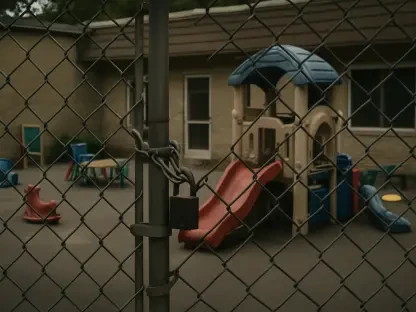In the heart of Texas, the Austin Independent School District (AISD) is grappling with a staggering $19.7 million budget deficit that casts a shadow over its pioneering wall-to-wall dual language programs, which are embedded in four elementary schools—Ridgetop, Becker, Reilly, and Sunset Valley. These initiatives provide every student with instruction in both Spanish and English, nurturing bilingualism and cultural fluency from the earliest grades. As the district prepares to release a comprehensive restructuring plan on October 3, the possibility of relocating these programs to areas with higher numbers of emergent bilingual students—those still mastering English—has ignited a firestorm of concern among families and educators. The stakes are immense, as these programs are not just about language acquisition but about building bridges between diverse communities. With fiscal constraints tightening, the question looms: can AISD preserve the integrity of bilingual education while addressing urgent financial and equity challenges? This dilemma reflects a broader struggle in public education to balance innovation with necessity.
The Value and Structure of Bilingual Programs
Immersive Learning Model
The wall-to-wall dual language model in AISD represents a transformative approach to education, where every student, regardless of their native tongue, engages in a curriculum delivered in both Spanish and English. At schools like Ridgetop Elementary, the day begins with young learners immersed in Spanish-heavy instruction during the early grades, a method designed to build a strong foundation before gradually integrating more English as they advance. This immersive environment fosters not only linguistic skills but also cognitive flexibility and cultural appreciation, benefiting both native Spanish speakers and their English-speaking peers. The seamless blend of languages in daily lessons creates a dynamic classroom atmosphere where students naturally absorb vocabulary and grammar through real-world application, from storytelling to science experiments. Such a structure is rooted in the belief that bilingualism is a powerful tool for academic success and social connection, positioning students to thrive in an increasingly globalized world.
Beyond the classroom mechanics, the impact of these programs is deeply personal for many students and families involved. The dual language model offers a rare opportunity for children to maintain ties to their heritage while gaining proficiency in a second language, often creating a sense of pride and identity. For emergent bilingual students, this approach can be a lifeline, providing the support needed to navigate academic challenges while learning English. Meanwhile, native English speakers gain a competitive edge through early exposure to Spanish, a skill that carries significant value in diverse communities and future careers. However, as powerful as this model is, its effectiveness hinges on a balanced mix of students from different linguistic backgrounds, a balance that has shifted over time at these campuses. The growing concern is whether the original mission to prioritize those most in need of bilingual support is still being met under current demographics, a factor that now fuels debates about the programs’ future.
Broad District Commitment
AISD’s dedication to linguistic diversity extends far beyond the four wall-to-wall dual language schools, encompassing a wide array of bilingual offerings across the district. In total, 51 elementary schools, 13 middle schools, and five high schools feature partial dual language programs, while select campuses also provide instruction in Mandarin and Vietnamese alongside English. This expansive commitment reflects a strategic vision to prepare students for a multicultural society, recognizing the importance of language skills in fostering inclusivity and opportunity. These varied programs cater to a broad student population, ensuring that bilingual education is not a niche offering but a core component of the district’s educational framework. The diversity of languages taught underscores AISD’s responsiveness to the needs of its community, where families from different backgrounds seek educational environments that honor their cultural roots.
Yet, even with this widespread effort, the looming budget shortfall threatens to undermine the district’s ambitious goals. Maintaining such a robust array of programs requires significant resources, from trained bilingual educators to specialized materials, all of which are now under scrutiny as AISD seeks to trim costs. The potential ripple effects of budget cuts could reach beyond the wall-to-wall campuses, impacting the quality and availability of bilingual education across all levels. For many stakeholders, this raises alarms about the district’s ability to sustain its mission of linguistic inclusivity while navigating financial hardship. As decisions loom, the challenge lies in preserving the essence of these initiatives—equipping students with vital skills—without sacrificing the breadth of access that has defined AISD’s approach. The outcome of the upcoming plan will test the district’s resolve to uphold its values in the face of adversity.
Budget Challenges and Proposed Changes
Financial Strain and Restructuring
The $19.7 million budget deficit facing AISD has set the stage for a sweeping overhaul of district operations, with the release of a detailed restructuring plan scheduled for October 3. This financial crisis stems from a combination of declining enrollment, rising operational costs, and reduced state funding, forcing district leaders to consider drastic measures such as school closures, redrawn attendance boundaries, and stricter transfer policies. At the heart of these proposed changes is the potential relocation of the wall-to-wall dual language programs to areas with higher concentrations of emergent bilingual students, a move aimed at better aligning resources with need. Such a shift could fundamentally alter the educational landscape for hundreds of families, raising questions about access and continuity. The urgency of addressing this shortfall cannot be overstated, as failure to act could lead to deeper cuts affecting a wider range of programs and services across the district.
While the financial necessity of restructuring is clear, the implications for bilingual education are particularly contentious. Relocating the wall-to-wall programs could mean dismantling established learning environments that have taken years to cultivate, potentially disrupting student progress and community cohesion. District officials face the daunting task of communicating the rationale behind these tough choices, emphasizing that the goal is not to diminish bilingual education but to enhance its impact where it is most needed. However, skepticism abounds among affected families, many of whom fear that new locations may lack the same level of support or cultural resonance as the current campuses. As AISD prepares to unveil its strategy, the balance between fiscal responsibility and maintaining educational quality remains precarious, with the risk of unintended consequences looming large over every decision.
Focus on Equity and Guidelines
Central to the district’s rationale for potential changes is the need to adhere to guidelines set by the Texas Education Agency (TEA), which recommend that native English speakers constitute no more than 40% of participants in dual language programs district-wide. Currently, at some wall-to-wall campuses like Ridgetop, over 60% of students are native English speakers, a stark imbalance that diverges from the programs’ primary intent to support emergent bilingual learners. This demographic shift, observed over recent years, has prompted AISD leaders to reconsider the placement of these specialized programs to ensure they serve the students who need them most. Equity in education is the driving force behind this push, as officials argue that resources must be directed to areas with greater concentrations of students still mastering English, thereby maximizing the programs’ effectiveness.
The focus on equity also brings into sharp relief the broader mission of public education to address systemic disparities. District representatives stress that maintaining a balanced student composition is not just about meeting state guidelines but about preserving the integrity of dual language education as a tool for academic and social empowerment. Relocating programs, though disruptive, could create opportunities for more emergent bilingual students to access high-quality bilingual instruction, potentially narrowing persistent achievement gaps. Yet, this approach is not without challenges, as it risks alienating families who have come to rely on the unique environments at the existing schools. The forthcoming plan will need to carefully navigate these tensions, offering clear transition strategies to mitigate disruption while prioritizing fairness. How AISD implements these changes will likely set a precedent for how educational equity is pursued amidst financial constraints.
Community Impact and Educational Disparities
Parental Concerns and Cultural Stakes
For many parents in AISD, the wall-to-wall dual language programs are more than just an educational model—they are a vital link to cultural identity and community belonging. Families at schools like Becker share poignant stories of how bilingual education allows their children to embrace heritage languages that were once stigmatized, fostering a sense of pride and connection to family roots. The fear of relocation looms large, as parents worry that moving these programs could sever the unique cultural fabric woven into daily school life. The emotional weight of such a change is palpable, with many expressing doubts about whether a new setting could replicate the same nurturing environment. This concern is not merely about logistics but about preserving a space where students feel seen and valued in their linguistic diversity, a factor that has profound implications for their personal growth.
Adding to the complexity, parents also grapple with the practical challenges that relocation might bring, from longer commutes to uncertainty about program quality in new locations. Voices from Sunset Valley highlight a deep attachment to the bilingual culture that defines their school, viewing any change as a potential loss of community identity. While some families indicate a willingness to adapt if a relocated program remains accessible, the overriding sentiment is one of apprehension about disrupting a system that has worked well for their children. These personal stakes underscore the broader debate about how educational decisions impact real lives, often in ways that data and policy alone cannot capture. As AISD moves forward, addressing these heartfelt concerns will be crucial to maintaining trust and ensuring that any changes are perceived as fair and inclusive, rather than dismissive of the communities most affected.
Achievement Gaps and Equity Needs
The urgency of addressing educational disparities among emergent bilingual students in AISD cannot be ignored, as evidenced by troubling data from the State of Texas Assessments of Academic Readiness (STAAR). Only 15% of eighth-grade emergent bilingual students in the district met grade level in math, compared to a statewide average of 29%, while just 21% reached proficiency in reading, against a state figure of 31%. These stark gaps highlight the critical need for targeted interventions, particularly through programs like dual language education that are designed to support language acquisition alongside academic achievement. The numbers serve as a stark reminder that without strategic resource allocation, many students risk falling further behind, perpetuating cycles of inequity that hinder long-term success. This reality fuels the district’s push to realign bilingual programs with areas of greatest need.
Moreover, the achievement disparities underscore a legal and ethical imperative to prioritize emergent bilingual students, who often face systemic barriers in accessing quality education. Experts argue that while dual language programs benefit all participants, their primary purpose must be to serve those who rely on bilingual instruction for functional access to learning, employment opportunities, and family connections. The current imbalance at wall-to-wall campuses, where native English speakers often outnumber their emergent bilingual peers, dilutes this focus, prompting calls for change. AISD’s challenge lies in crafting a restructuring plan that not only addresses these academic gaps but also communicates a clear commitment to equity as a guiding principle. The decisions made in the coming weeks will test the district’s ability to turn data-driven insights into meaningful action, ensuring that the most vulnerable students receive the support they deserve.
Navigating the Path Forward
Balancing Innovation and Equity
Looking back, the journey of AISD’s wall-to-wall dual language programs has been marked by innovation and a deep commitment to fostering bilingualism among diverse student populations. The district has built a reputation for creating immersive educational environments that bridge linguistic divides, as seen in the vibrant classrooms of Ridgetop and Becker. Yet, the $19.7 million deficit has forced a reckoning, compelling leaders to confront uncomfortable demographic imbalances and persistent achievement gaps among emergent bilingual students. Parental voices have echoed with passion and concern, reflecting the profound cultural and personal stakes tied to these programs. Each stakeholder—whether a family fearing disruption or an official advocating for equity—has brought a vital perspective to a debate that transcends mere numbers, touching on the very essence of what public education should strive to achieve.
Steps Toward Sustainable Solutions
Moving ahead, AISD must prioritize actionable strategies that safeguard the core benefits of bilingual education while addressing fiscal realities. A critical next step involves engaging communities through transparent dialogue, ensuring that families understand the rationale behind potential relocations and have a voice in shaping transition plans. Investing in robust support systems—such as training for educators and resources for new program sites—will be essential to maintain quality if changes are implemented. Additionally, the district should explore creative funding solutions, such as partnerships or grants, to lessen the impact of budget cuts on specialized programs. Monitoring academic outcomes for emergent bilingual students post-restructuring will provide valuable data to refine approaches over time. Ultimately, the path forward requires a delicate balance of preserving community trust and advancing equity, setting a model for other districts facing similar crossroads in public education.









